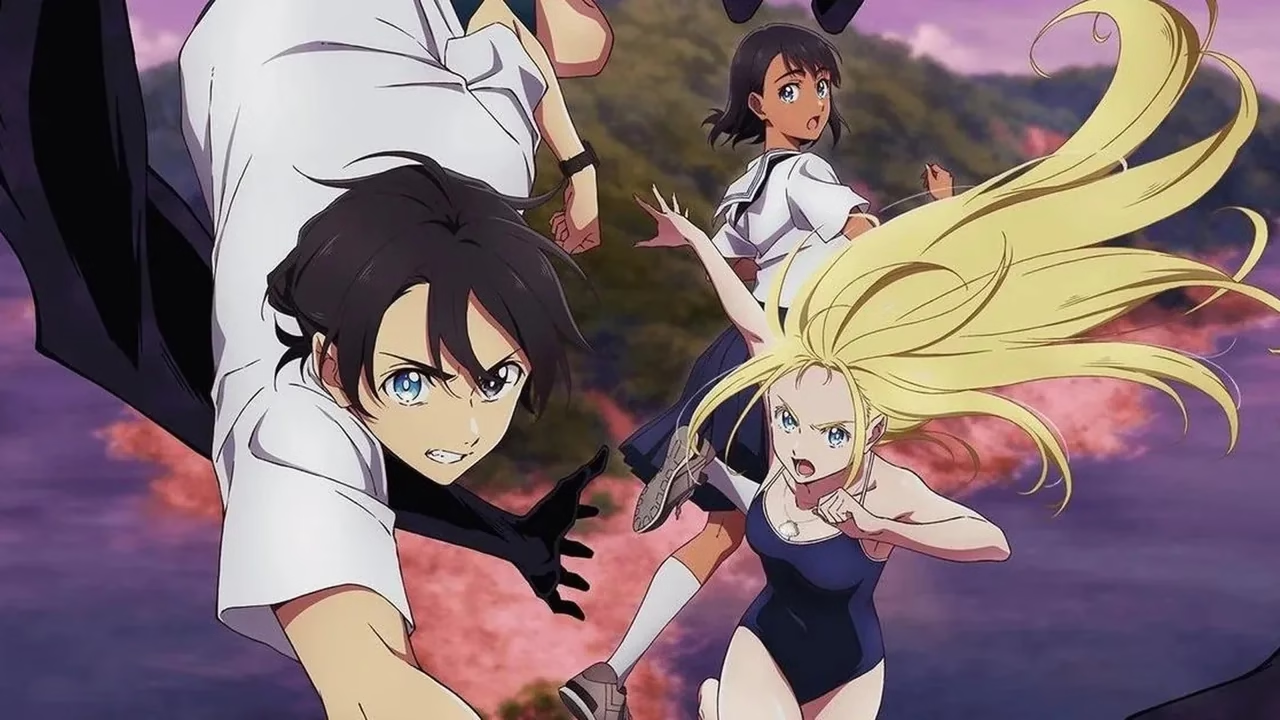Summer Time Rendering isn’t just another time-loop anime riding the coattails of genre favorites. This psychological thriller grabs you by the throat and refuses to let go for 25 episodes of relentless tension.
While most anime struggle to balance multiple genres, Summer Time Rendering masterfully weaves supernatural horror, time travel mechanics, and emotional storytelling into something genuinely unsettling. It’s the kind of series that makes you question every shadow in your peripheral vision.
This summer time rendering anime review dives deep into why this overlooked gem deserves your attention, especially if you’re tired of predictable thriller narratives.
Plot Overview
Shinpei Ajiro returns to his childhood island home for a funeral that sets everything in motion. His childhood friend Ushio has died under mysterious circumstances, and something feels fundamentally wrong about the entire situation.
The island harbors dark secrets involving entities called “Shadows” – malevolent copies that replace people by consuming their memories and identities. When Shinpei discovers the truth, he gains the ability to loop back in time upon death, creating a deadly game of trial and error.
Each loop reveals new layers of conspiracy stretching back generations. The stakes escalate from personal survival to preventing an apocalyptic event that could consume everything Shinpei holds dear.
What sets this apart from typical time-loop stories is how each reset carries genuine psychological weight. Shinpei doesn’t just remember previous loops – he’s traumatized by them.
Animation & Sound Design
Studio OLM delivers visually striking work that perfectly captures the series’ dual nature. Bright summer scenes contrast sharply with nightmarish shadow encounters, creating an unsettling tonal whiplash that keeps viewers on edge.
The animation excels during action sequences, particularly when Shadows morph and attack. These scenes feel genuinely disturbing rather than cartoonish, thanks to fluid movement and creative visual distortions.
Lighting plays a crucial role in building atmosphere. Harsh shadows and sudden darkness shifts signal danger, while warm lighting provides false security that’s often shattered moments later.
The soundtrack complements this visual storytelling perfectly. Haunting melodies underscore emotional moments, while discordant notes accompany supernatural encounters. Sound effects during Shadow transformations are particularly effective at creating visceral unease.
Themes & Symbolism
Summer Time Rendering explores grief through its time-loop mechanics in ways that feel genuinely profound. Shinpei’s repeated failures to save his friends mirror the stages of grief – denial, anger, bargaining, and eventual acceptance.
The Shadows represent more than simple antagonists. They symbolize how memories can be distorted, how identity can be lost, and how the past haunts the present. Each Shadow copying mechanism reflects fears about authenticity and replacement anxiety.
The island setting itself becomes thematic. Isolated communities often harbor secrets, and Summer Time Rendering uses this trope to explore how collective trauma passes through generations. The cyclical nature of the island’s problems mirrors the cyclical nature of Shinpei’s loops.
Religious imagery appears throughout, particularly concerning fate and predestination. Characters grapple with whether their actions matter or if they’re trapped by cosmic forces beyond their control.
Characters Worth Remembering
Shinpei Ajiro evolves from passive observer to tactical mastermind across multiple loops. His character development feels earned because we witness his gradual learning process. Each failure teaches him something new about strategy, timing, or human nature.
Ushio Kofune exists in a fascinating duality – innocent childhood friend and powerful supernatural entity. Her relationship with Shinpei anchors the emotional core while her abilities drive the plot forward.
Mio Kofune provides grounding reality amid escalating supernatural chaos. Her protective instincts and determination make her more than just a damsel in distress.
The antagonists operate with complex motivations that gradually unfold. They’re not evil for evil’s sake but driven by understandable, if misguided, desires to protect or preserve what they value.
Comparisons to Other Time-Loop Anime
Summer Time Rendering occupies unique territory among time-loop anime. Unlike Erased’s focus on changing the past to heal emotional wounds, this series emphasizes survival horror and tactical planning.
Steins Gate builds complexity through scientific exposition and character relationships. Summer Time Rendering achieves similar complexity through mystery revelation and supernatural worldbuilding.
Re Zero shares the trauma-focused approach to time loops, but Summer Time Rendering maintains tighter pacing and clearer objectives. Shinpei’s goals remain consistent even as methods evolve.
What distinguishes Summer Time Rendering is its horror integration. Other time-loop anime use the mechanic for drama or comedy. This series uses it to amplify dread and uncertainty.
Final Verdict + Rating
Summer Time Rendering succeeds where many thriller anime fail by maintaining consistent tension without sacrificing character development. The pacing never feels rushed despite covering substantial ground across 25 episodes.
Strengths include masterful atmosphere building, complex plotting that rewards attention, and emotional payoffs that feel genuinely earned. The animation and sound design create an immersive experience that enhances rather than distracts from the storytelling.
Weaknesses primarily involve accessibility. New viewers might feel overwhelmed by the rapid information dumps and complex mythology. Some plot threads feel slightly underdeveloped compared to the main narrative.
The series demands active viewing but rewards that investment with one of the most satisfying conclusions in recent thriller anime.
Rating: 9/10
Recommendation: Essential viewing for psychological thriller fans and anyone seeking time-loop narratives with genuine horror elements.
FAQs
-
Is Summer Time Rendering worth watching?
Yes, especially for fans of suspense, time travel, and plot-heavy storytelling with horror elements.
-
How many episodes are in Summer Time Rendering?
The anime consists of 25 episodes across a single season.
-
Is the Summer Time Rendering anime faithful to the manga?
Yes, it closely follows the manga source material with minimal filler content.
-
Is Summer Time Rendering scary?
It contains horror elements and psychological tension, but focuses more on suspense than pure terror.
-
What genre does Summer Time Rendering fall under?
Thriller, Mystery, Sci-Fi, Supernatural, and Psychological Horror combined into one series.
Conclusion
Summer Time Rendering stands apart in the crowded time-loop genre by refusing to play it safe. It combines supernatural horror with emotional storytelling in ways that feel fresh and genuinely unsettling.
This isn’t casual viewing material. It demands attention, rewards careful viewers, and delivers an experience that lingers long after the final episode. For anime fans craving intelligent thriller narratives that respect their intelligence, Summer Time Rendering delivers exactly what you’ve been missing.
The series proves that anime can tackle complex themes while maintaining entertainment value. It’s the kind of show that reminds you why you fell in love with the medium in the first place.
Watched Summer Time Rendering? Drop your theories and reactions in the comments – and check out our episode recaps for a deeper dive into the mysteries you might have missed.


Leave a Reply